The stories behind the A. Petersen Collection
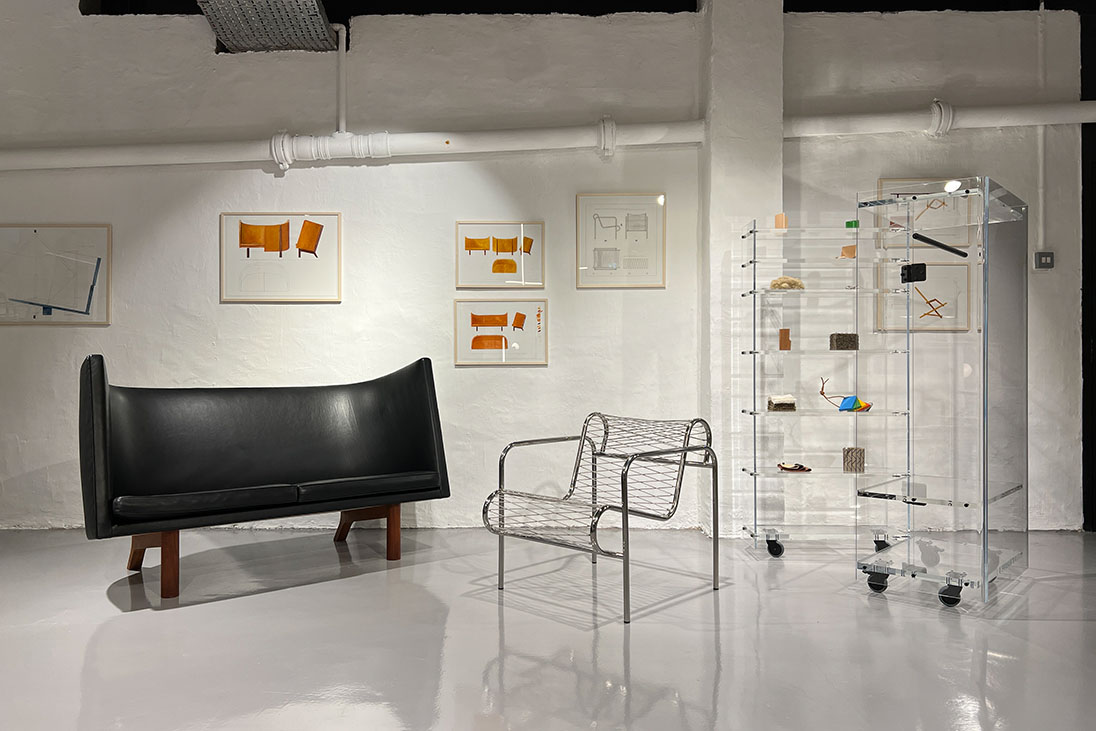
On renewing the Danish design tradition and carrying it into the 21st century
Last month, we were delighted to welcome Anders (“the ‘A’ of A. Petersen”) and his associates, Kari and Ricky, to our premises at 110 Drury Lane where they were kind enough to demonstrate and, in turn, to share some of the delightful and very personal stories behind the A. Petersen Collection – which we are proud to be launching in the UK market for the very first time.
Established in 2014, A. Petersen is a contemporary furniture company that aims to renew the Danish design tradition, carry it into the 21st century, and emphasise the value of ‘getting up close’. “Not in a grand or rapid way, for the sake of scale or tempo”, reads A. Paper No. 2 (A. Petersen’s stylish editorial catalogue), “but in a measured, serious way, for the sake of our current time as well as posterity, because furniture should last a lifetime, and hopefully even longer”. With a focus on quality, craftsmanship, and respect for professional expertise, the Collection has been developed in close collaboration with the very best designers and craftspeople known to A. Petersen throughout Denmark, including those at A. Petersen’s own workshop in Kløvermarksvej where production ranges from the development of prototypes to the manufacture of new pieces and the renovation of old ones.
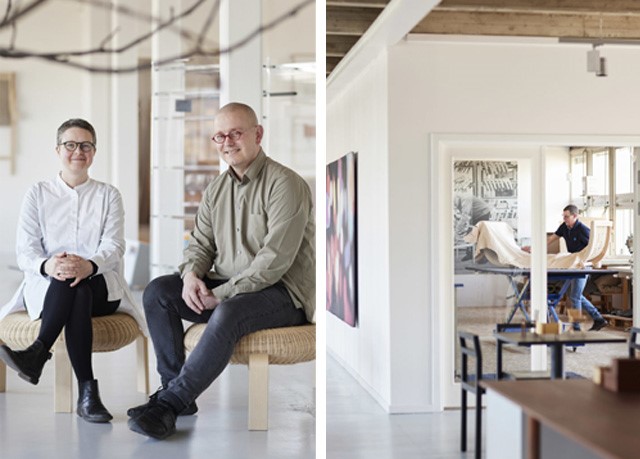
Left: Anders and Kari of A. Petersen. Right: A. Petersen’s workshop in Kløvermarksvej
One such designer who has faithfully entrusted the company with his precious designs, which formed the cornerstone of our A.Petersen display, is renowned Danish architect Dan Svarth. Although he has always shied away from the limelight, we were thrilled to welcome Svarth and his wife, Anet, for drinks on 21 September where they proudly sat on his masterfully designed DS Sofa in mahogany and black Sørensen leather upholstery surrounded by the A. Petersen team.
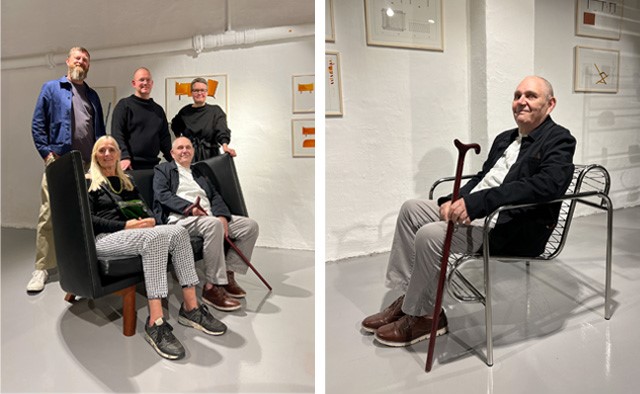
Clockwise from top left: Ricky, Anders, Kari, Dan Svarth and Anet. Right: Dan Svarth sat on his Wire Chair
Dan Svarth (1942)
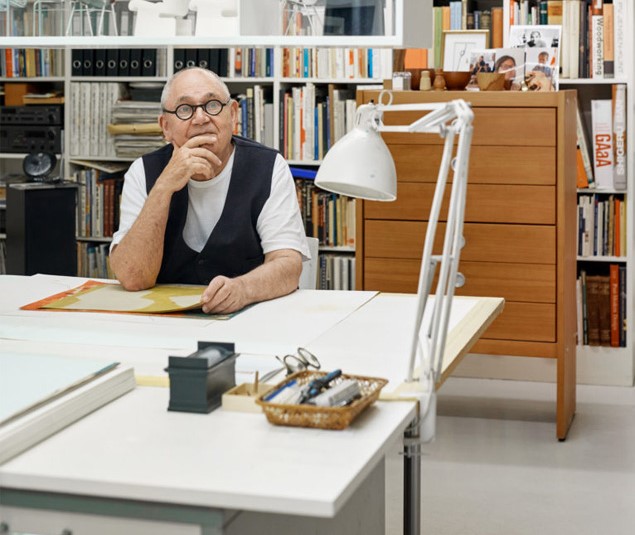
Dan Svarth photographed at his home for A. Paper No.2. Photograph: Enok Holsegård
Educated at both the Kunsthåndværkerskolens Furniture Department and The Royal Danish Academy of Fine Arts’ School of Architecture, in 1962 Dan Svarth began his career as a joiner in the Bornholms Møbelfabrik. In 1972, Svarth started to work with Poul Kjærholm, a world renowned Danish architect for whom he would work until Kjærholm’s death in 1980. The same year that he started to work for Kjærholm, Svarth also returned to the School of Architecture where he soon became a teacher and conducted his own research. Since the mid-Eighties, Svarth has been enthusiastically engaged in a comprehensive research project into his passionate interest of the earliest known examples of Egyptian furniture designs from 3000 BCE. With the walls of his own home covered in large plaster casts of ancient Egyptian friezes and ornaments, in his interview for A. Paper No.2 Svarth muses: “You see a piece of furniture, and then you try to improve it. You try to refine it”. Skillfully crafting over one hundred 1:5 scale models of ancient Egyptian furniture for a 2018 exhibition entitled ‘First Movers’, many of his scale models have also been shown at the Egyptian Museum in Cairo where they were celebrated in an exhibition in the summer of 2019.
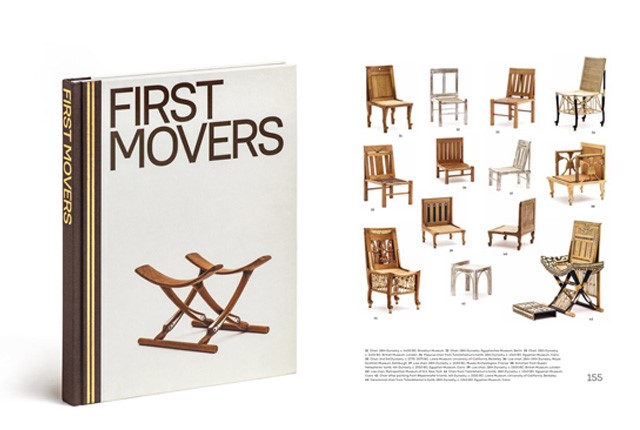
‘First Movers – Egyptian Furniture Making in the Age of the Pharaohs’, an updated version of the 1998 book by Dan Svarth
Alongside this work, Svarth has – of course – also designed furniture of his own, as evidenced by an impressive collection of models in his basement. However, until five years ago when Anders laid eyes on this hidden treasure trove, only a few of these designs had ever been put into production. Since then, both new and old designs have been brought to life.
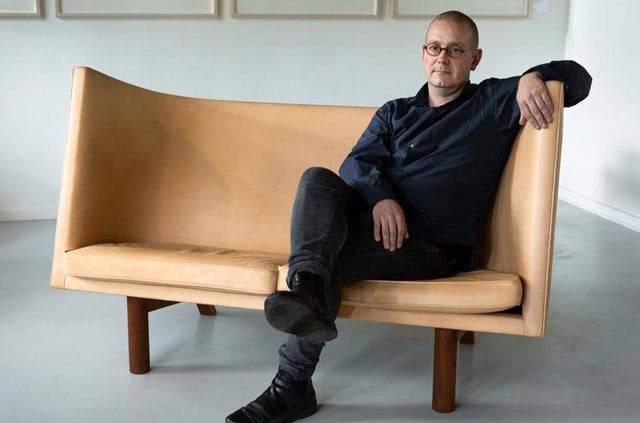
Anders Petersen on Dan Svarth’s Sofa in mahogony and natural Sørensen leather finish. Photograph: Nima Taheri
DS Sofa – Mahogany Frame and Sørensen Leather Upholstery
In 2018, Dan Svarth presented Anders with a selection of watercolour drawings, a 1:5 and a 1:10 scale model of a consideration for a new sofa design - the DS Sofa. Developed in A. Petersen’s workshop, many hours have since been spent to get the rounding of the base frame to fit the slanted angle of the legs and uprights. However, Anders tells of how the greatest challenge was to get the leather neatly stretched out into one piece without a seam along the middle or losing the arched form of the backrest. Soaked in water, a single leather hide is stretched for the rear of the back section and another for the inner side of the backrest to make the classic modernist design “beautiful from every angle” – Anders lies the sofa on its back to show us how even the underside of the sofa, which has been finished in canvas, is “beautiful”. It takes close to two weeks for the upholsterer, who is Dan Svarth’s son Jon, to complete the upholstery of the sofa, Anders explains. He then goes on to tell the anecdote of when Jon Svarth was sewing the two pieces together in a natural leather finish and accidently pricked his finger with the needle, staining the leather and demanding that the complex process be started again from the very beginning.
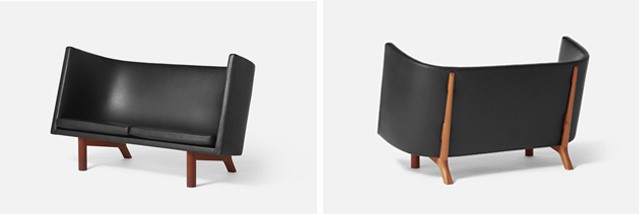
DS Sofa in mahogany and black Sørensen leather finish
Wire Chair – Steel and Carbon Fibre
Whilst teaching at the Royal Danish Academy of Fine Arts’ School of Architecture and working with Poul Kjærholm, in 1972 Dan Svarth made the very first prototype of the Wire Chair. Bending ordinary water pipes and weaving metal wire between them, although glorious, the prototype did not prove stable enough for long-term use. Many years later, Anders would ask friends, architects, designers if they had come across a material which could be finished without knots; however, it wasn’t until he found himself in a boat workshop that a craftsman finally responded with carbon fibre – a thread which could be fed back into itself and when applied with a load could bear more than 4,000 tonnes. Then and there Anders bought one hundred metres and, within hours of his return to the workshop, the carbon fibre was woven in a diagonal pattern that made the design strong and stable. To this day, the Wire Chair is woven at A. Petersen’s workshop with welding by Poul Kjærholm’s grandson, Mikkel.
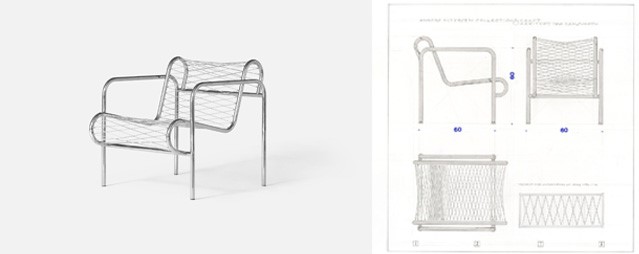
Left: Wire Chair in steel and carbon fibre finish. Right: Original sketch by Dan Svarth
Bookkeeper – Painted Wood and MDF
One day, whilst organising his vinyl collection, Anders posed the question of how he might keep it tidy to Dan Svarth. The next day, Svarth returned with the simple construction of MDF boards that had been cut, milled and glued together to form three surfaces with corners and edges. From there, the Bookkeeper was developed in A. Petersen’s workshop until the design became something more complex – two small, angled legs to tilt the whole box and an opening along the spine to create a light and elegant quality. When discussing colours, however, Svarth was adamant that it be produced in six exacting RAL colours: blue (5012), green (6017), red (2002), black (8022), yellow (1028) and grey (7042).
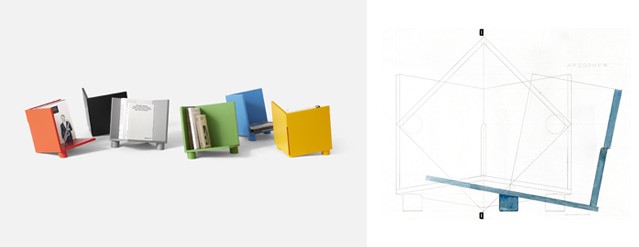
Left: Bookkeepers in 6 RAL colour finishes. Right: Original sketch by Dan Svarth
Knud Holscher (1930)
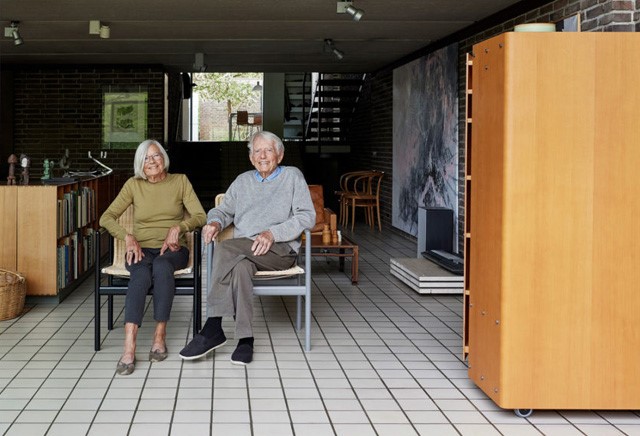
Knud Holsher and his wife, Henny, at their home in Holte for A. Paper No.2. Photograph: Enok Holsegård
After graduating from the Royal Danish Academy of Fine Arts’ School of Architecture in 1958, Knud Holscher started to work for Arne Jacobsen, a world renowned Danish architect for whom he would work as head of studio on the design and execution of St. Catherine’s College in Oxford, England. Holscher would also go on to work for KHR Architects (then Krohn & Hartvig Rasmussen Architects) before starting his own design studio, Knud Holscher Design, which is currently led by Knud Holscher’s son, Rasmus. Alongside his appointment as professor of the School of Architecture in 1968, like few others Holscher has explored every corner of the profession, accumulating a diverse portfolio of works from buildings, doorknobs, toilets, bus shelters and metro signs, to furniture, cutlery, lamps and other ‘architectural hardwares’.
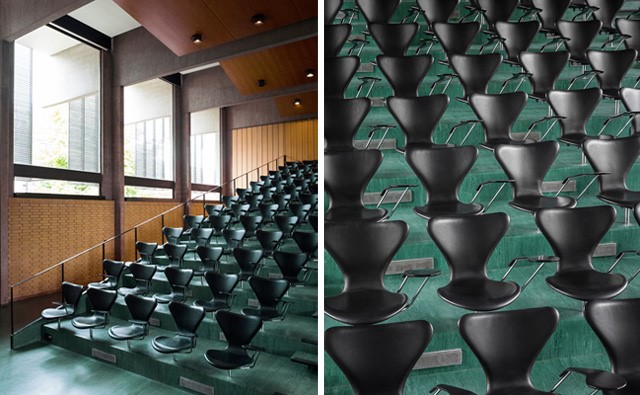
Auditorium of St Catherine’s College, Oxford with Series 7 Chairs by Arne Jacobsen. Photograph: Jonas Bjerre Poulsen / Norm Architects
Roller Cabinet – Acrylic
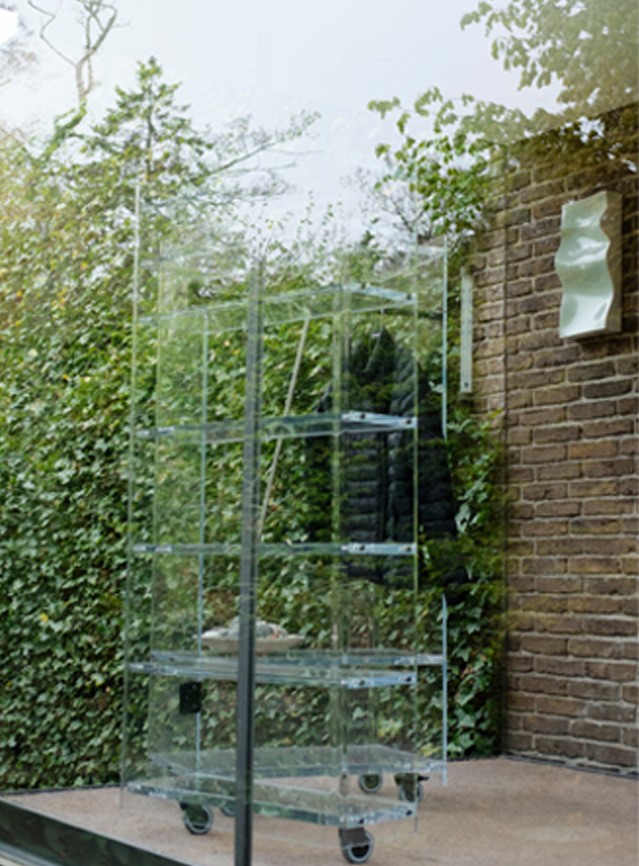
Roller Cabinet in acrylic at Knud and Henny Holscher’s home in Holte. Photograph: Enok Holsegård
In Knud and Henny Holscher’s kitchen stand three unusual kitchen cabinets, which were originally designed as room dividers and storage for a large architecture firm. More like upright boxes or travel trunks on wheels, Holscher uses these cabinets to store herbs and spices, pots, plates, bowls and glasses. “Even though they were intended for office use”, says Holscher in his interview for A. Paper No.2, “Henny and I have been using the cabinets in the kitchen all these years, and we think they work really well for storing kitchen utensils and spices”. The cabinets were not planned to be put into production for anyone else, until Anders saw them and together they produced a cabinet in Oregon pine mounted on wheels. In 2019, a new acrylic version was produced at Plastsnedkeriet in Silkeborg, a specialist in this type of production, and assembled at the A. Petersen workshop in Kløvermarksvej. “The one in wood is wildly beautiful. The one in plastic a bit more…” – even Holscher is unable to land on a word that aptly describes the joy of the Roller Cabinet in acrylic.

Left: Roller Cabinet in Oregon pine. Right: Roller Cabinet in acrylic
Knud Holscher & Ejnar Pedersen
Ejnar Pedersen (1923—2020)
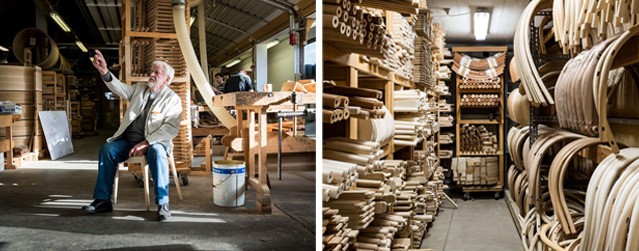
Ejnar Pedersen at his PP Møbler workshop. Photograph: Alastair Philip Wiper
Hailing from a small town in the rural south of Jutland, at just fourteen years old Ejnar Pedersen was sent, although reluctantly, to work at Willadsen – a local joinery workshop. Upon finishing his apprenticeship in 1943, he moved to Copenhagen where he worked at AJ Iversen, then the country’s most respected furniture manufacturer, before co-founding PP Møbler with Knud Willadsen, the son of the old master with whom he had gained his apprenticeship. In 1951, the studio joined forces with artist Gunnar Aagaard Andersen and architects Nanna and Jørgen Ditzel to put on‘Wood, Form and Colour: A Cabinetmaker’s Collaboration with Artists’ , an exhibition at Winkel & Magnussen in Copenhagen. From there, Pedersen would work side by side with leading architects and designers of the time including Poul Kjærholm, Arne Jacobsen, Hans Wegner, Finn Juhl, and Verner Panton.
KHEP Chair – Painted Ash and Wicker
In 2015, when Knud Holscher was eighty-five and Ejnar Pedersen was ninety-three, Anders teased the two men – who were close friends and had been over many years – with the idea of making “one last chair” together. However, Holscher and Pedersen wouldn’t hear of it and instead proposed that the chair be called “the second-to-last chair” (leaving room for at least one more). Produced in Pedersen’s workshop, the resulting KHEP Chair was a painted ash frame produced by Getama in northern Jutland and reminiscent of Holscher’s D Line door handles, and a seat in stainless steel and woven wicker welded by Mikkel Kjærholm and woven at Bruun Olsen Flet in Hillerød. Kari adds that before Pedersen passed away in the spring of 2020, he did in fact deliver a new dining chair design for the Danish royal family, fulfilling the chair’s prophecy as the second-to-last.
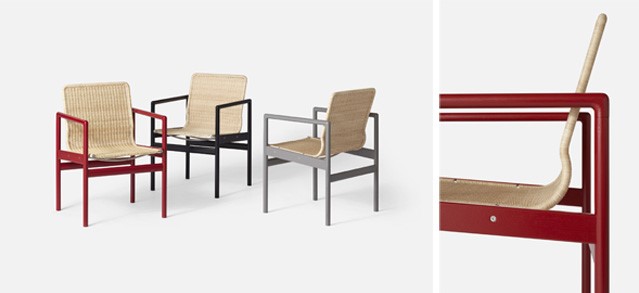
The KHEP Chair in three painted ash finishes
Ole Schjøll (1935 – 2018)
Originally trained as a carpenter and constructing architect, in 1964 Ole Schjøll graduated from The Royal Danish Academy of Fine Arts’ School of Architecture where he studied with Poul Kjærholm and Ole Wanscher. Going on to work for Halldor Gunnløgsson and Mogens Koch and return to the School of Architecture as a teacher, in 1974 Schjøll started his own design studio which spanned the fields of interior design, remodelling and furniture design.
OS Dining Table
In 1984, Ole Schjøll designed the first prototype of the Wire Table – a stainless steel frame with a rectangular powder lacquered metal table top. Later, this developed into the OS Dining Table, an unmistakable relative of the Wire Table (which was the first piece of furniture put into production by A. Petersen). “Where circle and cube meet”, the design presents of a round table top and a square stainless steel wire base produced and shaped by FK Trådindustri in central Jutland and subsequently welded together by Mikkel Kjærholm (who welds the Wire Chair by Dan Svarth and the KHEP Chair by Knud Holscher and Edjar Pedersen). Anders demonstrates that the ash table top, which is finished in black linoleum on one side and white laminate on the other, is reversible. “If you are in the mood for change, you can simply turn the table top over”, he explains; an expression which has also been accomplished with the Wire Table, with modular table tops in various colours that can be switched in and out.
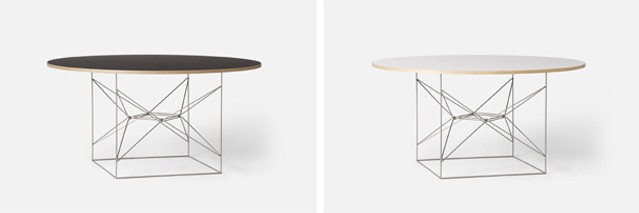
OS Dining Table in reversible black linoleum and white laminate
Renewing the Danish design tradition in the 21st century
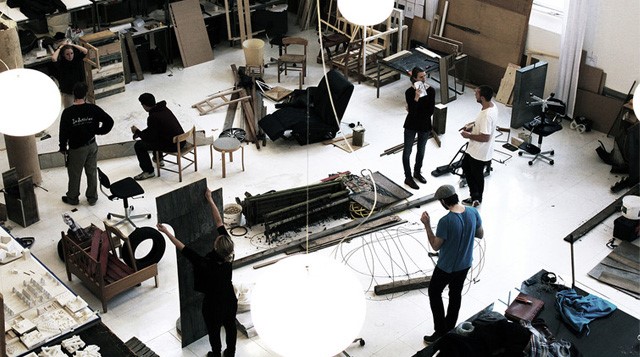
Contemporary students at the Royal Danish Academy of Fine Arts’ School of Architecture
The designers with whom A. Petersen has thoughtfully chosen to collaborate, all of whom can be considered ‘the last of the 20th century greats’, have in common their education at the prestigious Royal Danish Academy of Fine Arts’ School of Architecture, their proximity to legendary figures of Danish design – such as Poul Kjærholm who designed the PK22 Easy Chair, PK24 Chaise Longue and the PK65 Occasional Table and Arne Jacobsen who designed the Egg Chair and the Series 7 Chair – and their desire to pass down their craft to their children; some of whom have carried on the family tradition with a hand in the production of these very pieces from the A. Petersen Collection – a highly executed and thoroughly Danish affair.
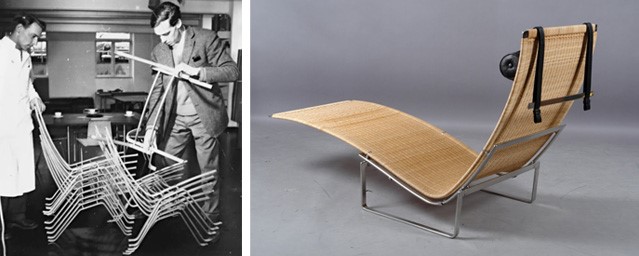
Left: Poul Kjærholm working on the PK22 Easy Chair. Right: PK24 Chaise Longue, 1965. Image courtesy of MoMA
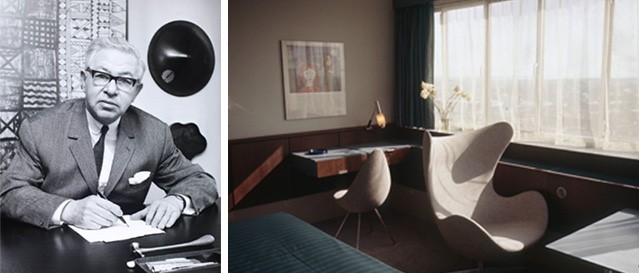
Left: Portrait of Arne Jacobsen. Right: Egg Chair at the SAS Hotel. Photograph: Arne Jacobsen / Royal Danish Library